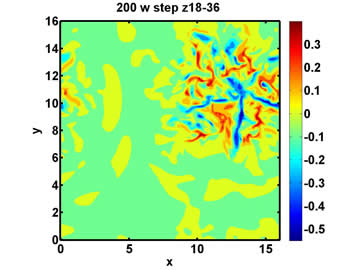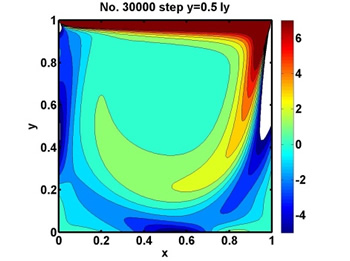Cloud self-aggregation
When water phase change is included in Rayleigh-Benard convection, the convection could be statically stable (Ra<0) in unsaturated region and unstable (Ra>0) in saturated region. That is, convection and gravity wave co-exist. Acending region is small and strong, with a large area of compensating descent. Direct numerical simulation shows that moist convection tends to organize into a “cloud cluster”, in analog to the cloud self-aggregation in real tropical atmosphere.
Pauluis, et al., 2011, Proc. Natl. Acad. Sci. |
 |


